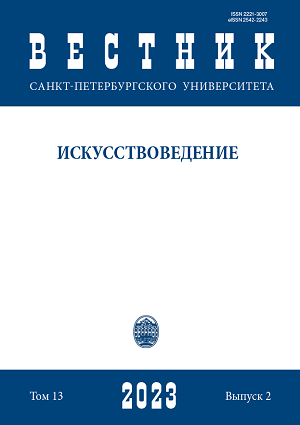Textile Painting by Cesare Tacchi
DOI:
https://doi.org/10.21638/spbu15.2023.206Abstract
The work of the Italian artists of the Piazza del Popolo School is a unique period in the history of art of the 20th century. The activities of this association marked the birth of the Italian version of pop art. Despite the fact that the American and Italian pop movements existed in parallel and had similar external features, they were significantly different. These differences can be traced in the creativity of the members of the association. Cesare Tacchi was a member of this union. The path of this master represents an individual trajectory of artistic and conceptual development. One of the creative stages of Cesare Tacchi falls into the mid-sixties of the twentieth century. Experimental and innovative paintings of this time were created using industrially produced fabrics. Large-scale textile collages, in addition to being painted with enamel, pastels and felt-tip pens, also acquired a relief texture due to the furniture filler. Cesare Tacchi used a pick with nails or metal staples in accordance with the logic of the created image. That is why the artist ironically called himself “upholstery”, and called his textile collages “upholstery”. In them, we find images of artist’s friends, his own self-portraits or images made on the basis of photographs. The pattern, texture of the fabric and the softness of the emerging relief, together with the conceptual nature of the creative technique, made a great impression on the viewer and gave rise to new associations. Textiles simultaneously demonstrated the consumer culture of that time, turned from a subordinate material into a means of artistic expression, became an object of art and contributed to the emergence of a stream of new associative links, far from the consumer idea.
Keywords:
contemporary art, textile painting, artistic textiles, Italian pop art, Cesare Tacchi, textile collage
Downloads
References
Downloads
Published
How to Cite
Issue
Section
License
Articles of "Vestnik of Saint Petersburg University. Arts" are open access distributed under the terms of the License Agreement with Saint Petersburg State University, which permits to the authors unrestricted distribution and self-archiving free of charge.






